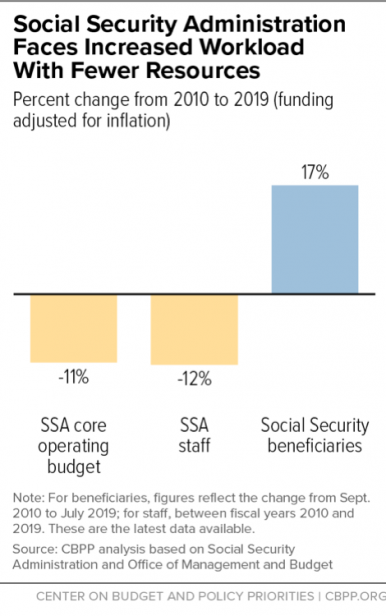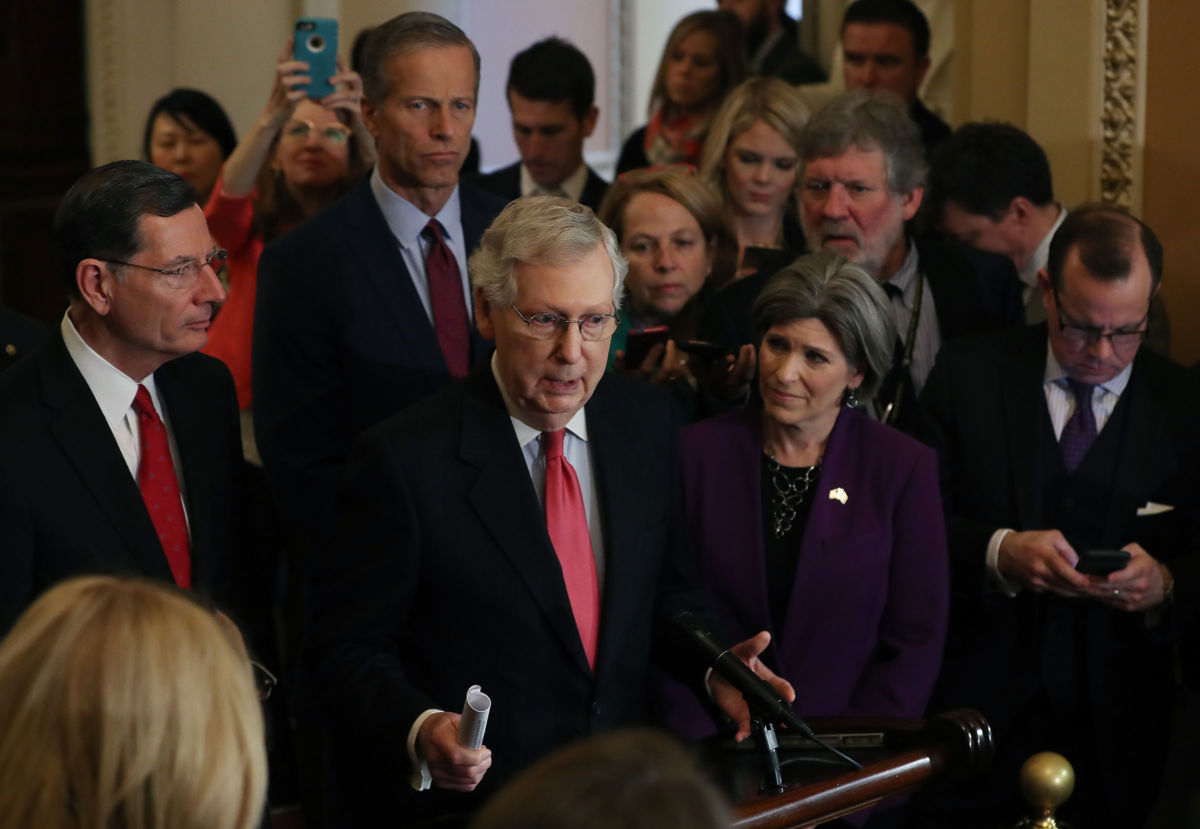This summer’s budget deal between President Trump and congressional leaders offers enough total discretionary dollars to give the Social Security Administration (SSA) a much-needed funding boost in 2020, but the Senate majority plans to cut $2.7 billion in inflation-adjusted dollars from the appropriations bill that funds SSA operations. That bill, in turn, would reduce SSA funding by more than 2 percent in inflation-adjusted terms. The companion House bill would slightly increase SSA funding, but by barely enough to offset inflation in 2020 — and not nearly enough to offset years of underfunding before then. For SSA to provide high-quality service to a growing population, policymakers must boost funding substantially.
SSA’s years of cuts have taken their toll. From 2010 to 2019, its operating budget fell nearly 11 percent in inflation-adjusted terms — even as the number of Social Security beneficiaries grew by 17 percent. (See chart.) As a result, SSA has lost 12 percent of its staff since 2010, hampering its ability to perform its essential services, such as determining eligibility in a timely manner for retirement, survivor, and disability benefits; paying benefits accurately and on time; responding to questions from the public; and updating benefits promptly when circumstances change.
As workloads and costs have grown — and budgets and staffing have shrunk — SSA’s service delivery has worsened:
- Most callers to SSA’s national 800 number don’t get their questions resolved; as callers are on hold for longer periods, nearly half hang up before connecting. And a growing number get busy signals.
- Due to understaffing, field office wait times have risen in every region of the country since 2010, with millions of visitors waiting longer than an hour.
- SSA has been forced to close 67 field offices and shorten office hours in the rest, making it harder for taxpayers and beneficiaries to access service.
- The average wait for a disability appeal is 16 months, causing hardship for hundreds of thousands of workers already struggling with a life-changing disability.
- SSA has stopped mailing Social Security statements to most workers as legally required, citing budget constraints.
- Millions of beneficiaries await benefit adjustments due to the agency’s backlog on its behind-the-scenes work, such as awarding benefits to widows when spouses die, issuing back payments, resolving complex claims issues, and adjusting benefits for early retirees and disabled workers with earnings. Some 3.2 million of these actions are pending, causing unnecessary hardship — and often overpayments.

Annual funding bills for the departments of Labor, Health and Human Services, and Education, which also include SSA’s administrative budget, have faced large cuts since 2010. The President and Congress should provide sufficient funding in the final 2020 appropriations bill to cover SSA’s essential services.
Join us in defending the truth before it’s too late
The future of independent journalism is uncertain, and the consequences of losing it are too grave to ignore. To ensure Truthout remains safe, strong, and free, we need to raise $50,000 in the next 9 days. Every dollar raised goes directly toward the costs of producing news you can trust.
Please give what you can — because by supporting us with a tax-deductible donation, you’re not just preserving a source of news, you’re helping to safeguard what’s left of our democracy.
